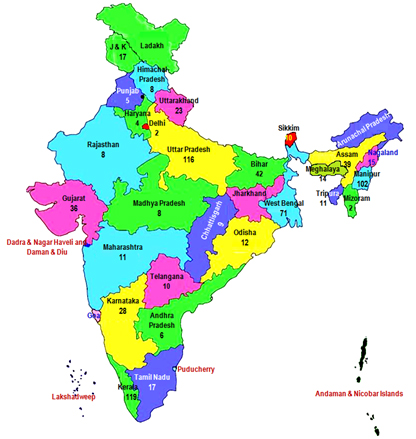Checklist of arthropod predators of the cotton aphid, Aphis (Aphis) gossypii Glover, 1877 (Insecta: Hemiptera: Aphididae), and their distribution in India
Main Article Content
Abstract
In this article, arthropod predators of Aphis (Aphis) gossypii Glover, 1877 (cotton aphid, melon aphid, brinjal aphid etc.) are catalogued along with the host plants of the prey distributed in different states and union territories of India. Predatory arthropods of cotton aphid mostly belong to four orders of class Insecta: Coleoptera (Anthribidae, Coccinellidae, Nitidulidae, Staphylinidae), Diptera (Calliphoridae, Chamaemyiidae, Cecidomyiidae, Syrphidae), Hemiptera (Anthocoridae, Geocoridae, Miridae, Pentatomidae) and Neuroptera (Chrysopidae, Hemerobiidae); and one order of class Arachnida, the order Araneae (spiders) (10 families). Among the Coleoptera, the Coccinellidae (ladybird beetles) is the largest family having 92 species feeding on this aphid infesting 107 species of host plants distributed in 27 states and union territories of India. A maximum of 52 species of these ladybird beetles’ prey on the aphids on brinjal (Solanum melongena) followed by cotton, Gossypium hirsutum (20 species), and okra, Abelmoschus esculentus (18 species). Among the Diptera, the hover flies (Syrphidae) are the most common predators having 24 species feeding on Aphis gossypii infesting 36 species of host plants distributed in 16 states and union territory of India. Among the Hemiptera, four species of anthocorid bugs are reported to prey on the cotton aphid. In Neuroptera, only two families, Chrysopidae (9 species) and Hemerobiidae (3 species) are recorded to prey on it in India. Among the Araneae, 29 species of spiders were reported belonging to 10 families, that prey on Aphis gossypii in six states of India. Indeed, very limited research works have been made to record these aphidophagous arthropods in India feeding on the cotton aphid and most of the regions are still unexplored and need an intensive and extensive survey plan to record them in those areas.
